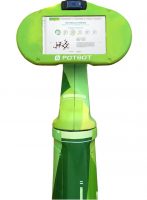Marijuana. Mary Jane. Pot. Reefer. Ganja. Weed. Joint. Grass.
The variety of terms used to describe cannabis are as diverse as the potentials of the plant itself – as well as the opinions of its proper nomenclature. A quick web search came up with a number of articles about how we should refer to cannabis, and opinions can be just as annoying and stinging as mosquitoes in the Everglades at the peak of season. Each of these words has an origin with which, having all the facts, you might not choose to align yourself. Words matter, and whether born from racism, xenophobia, or just plain ignorance, one will never go wrong following one simple piece of advice: “Never use a word or a phrase unless you know its meaning.” That said, it is not my intention here to add another opinion, but rather to present the topic from a different vantage. I’ll leave it up to you to decide whether or not it is worth your while to learn what you are saying, and in so doing, empower yourself to consider your audience as you consider your slang, just as you would with any other word.
The legalized cannabis industry has opened a plethora of professional opportunities. Thoughtfully considered, these opportunities can lead to new heights of professional accomplishment and financial earning capability. For those with the good fortune to have such opportunity in legalized cannabis, congratulations! You are a member of a very small group of pioneers who have the potential to shape an entire industry (remember that what Henry Ford did by creating the assembly line brought benefit, not just to the automotive industry, but to all industry.)
In this industry we are not just creating medical cannabis dispensaries, cultivation and processing facilities, we are creating new ideas and platforms for compliance, security, financial planning, quality assurance, botany, agriculture, sustainability, packaging, retail, inventory control, human capital – the list is as endless as the imagination – with the potential to influence capacity in every aspect of all types of industry, around the world. In the course of your career as a cannabis professional you will have a chance to interact with legal and healthcare professionals, legislators, regulators and investors. You may attend high profile events, hobnob with those who inspire social change and exchange dialog with thought leaders from all walks of life. As you represent your particular cannabis company, you will recognize that you also represent yourself, and in that very recognition will your thoughtfully chosen vernacular reveal your personal level of professionalism, eloquence and dignity; and irrespective of what, or from whom, any opinion originates, these core values are irreplaceable. Simply put, adults speak like adults.
A colleague reflected that we are not winning a long and drawn out struggle to divest ourselves from outdated prohibitions against the use of medical cannabis because of the words we are using, but because of education. While I agree with that assessment, the use of slang in professional discourse has a tendency to discredit the speaker and narrow the audience receptive to his message. As the scientific community and cannabis industry continues to re-educate society, our efforts will be bolstered by reaching as broad an audience as possible. Education presented professionally, eloquently, and with maturity engenders respect, goodwill and understanding. And that makes for fertile ground upon which to plant new ideas.









